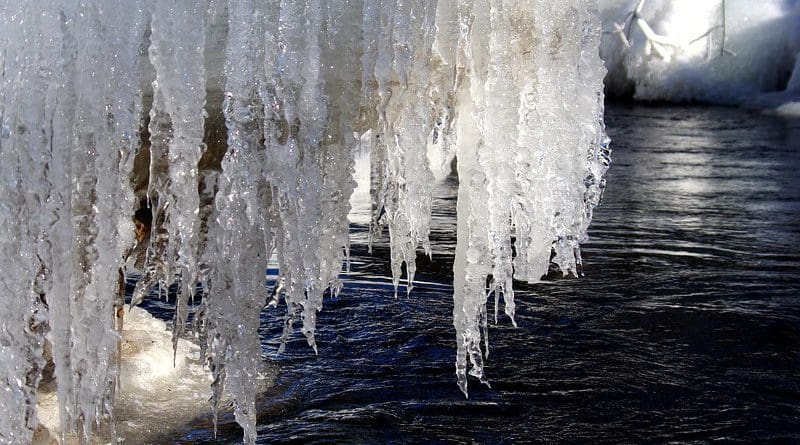Winter’s Wrath: The Dual Storm Impacting USA Reveals Unpredictability Of Climate Extremes – OpEd
By Ayesha Rafiq
The United States is currently facing a climatic paradox, as a powerful winter storm wreaks havoc on both its East Coast and the Pacific Northwest. This dual onslaught underscores the increasingly unpredictable nature of extreme weather events, fueled by the impacts of climate change.
On the East Coast, over 50 million residents spanning from eastern Ohio to the Northeast are grappling with the aftermath of a relentless winter storm. The National Weather Service (NWS) reports high winds and flooding advisories, particularly affecting New England coastal towns like Hampton Beach, New Hampshire. The inundation has reached alarming levels, prompting emergency evacuations, as seen in video footage circulating on social media.
Major cities, including New York, Philadelphia, and Boston, are not immune to the storm’s wrath. The NWS warns of potentially damaging gusts exceeding 50 miles per hour, threatening powerlines and trees. The consequences are evident, with 300,000 homes and businesses plunged into darkness from North Carolina to Maine, according to Poweroutage.us. The chaos extends to the skies, with over 1,200 flights delayed or canceled, creating widespread travel disruptions.
Tragically, the storm has claimed lives in Alabama, North Carolina, and Georgia, where high winds and tornadoes wreaked havoc. Additional fatalities occurred in Wisconsin and Michigan due to treacherous driving conditions caused by heavy snowfall.
While the East Coast battles floods, power outages, and tragic consequences, the Pacific Northwest braces itself for a separate winter storm. Communities in higher elevations are anticipating blizzard-like conditions, adding to the challenges faced by residents and authorities.
This dual winter onslaught serves as a stark reminder of the urgent need to address climate change and its cascading impacts. As extreme weather events become more frequent and intense, communities across the nation are forced to confront the devastating consequences. The nation remains on high alert as these twin winter storms continue to unfold, emphasizing the imperative for proactive climate action and resilience-building measures in the face of an increasingly unpredictable climate.
As winter’s grip tightens on the United States, the dual storms unfolding on opposite coasts highlight the interconnectedness of climate events and their far-reaching consequences. Climate change is the silent force amplifying the intensity and frequency of extreme weather, pushing regions accustomed to specific seasonal patterns into uncharted territory.
On the East Coast, where urban hubs and coastal communities bear the brunt of the storm, the vulnerabilities of our infrastructure and emergency response systems are laid bare. The cascading impact of disrupted power grids, flooded streets, and disrupted travel underscores the need for resilient urban planning and climate-adaptive measures.
Simultaneously, the Pacific Northwest anticipates a winter storm, revealing that no corner of the country is immune to the far-reaching effects of a changing climate. As communities in higher elevations brace for blizzard-like conditions, it becomes evident that climate resilience must be a priority nationwide, transcending regional boundaries.
The tragic loss of lives serves as a stark reminder that the impacts of climate change are not just environmental but have profound human consequences. Vulnerable communities are disproportionately affected, emphasizing the urgent need for social and environmental justice in climate adaptation strategies.
As we confront these dual storms, the imperative for coordinated national and international efforts to combat climate change becomes increasingly evident. The Paris Agreement and similar initiatives lay the groundwork for global collaboration, but the urgency of the situation calls for swift and decisive action.
Investing in renewable energy, implementing sustainable land-use practices, and fortifying infrastructure against climate extremes are essential steps toward building a resilient future. Additionally, prioritizing community-based adaptation strategies and empowering vulnerable populations can ensure that no one is left behind in the face of climate adversity.
The dual winter storms serve as a poignant wake-up call, urging us to recognize that the consequences of climate change are not a distant threat but a current reality. Beyond individual weather events, they reveal a systemic challenge that demands a collective, holistic response. It is time for leaders, communities, and individuals alike to unite in the fight against climate change, acknowledging that our actions today shape the climate of tomorrow.


You’re in Pakistan. You are not studying weather. And you’ve never lived in the US for any meaningful length of time. Guess what? The US has had “extreme weather” — winter and summer — for over 200 years. I know, I have been around for nearly 70 years and have had ancestors tell me about “extreme weather” in the US when they were children. Simply put, “extreme weather” is “normal climate”, not a result of “climate change”.